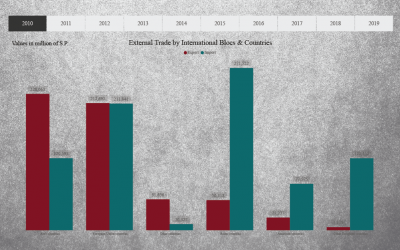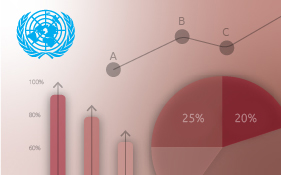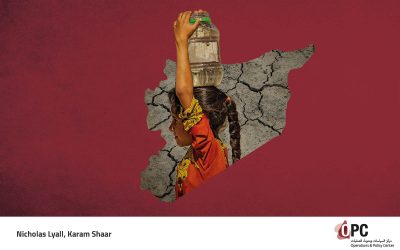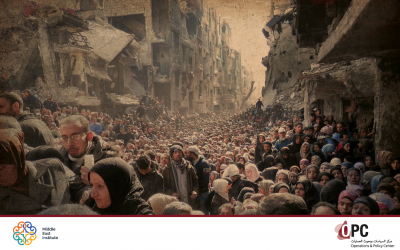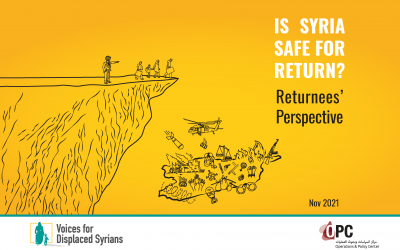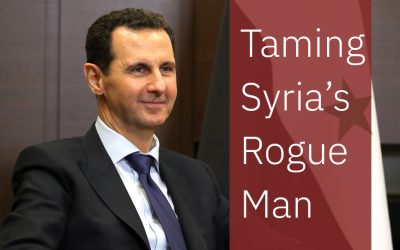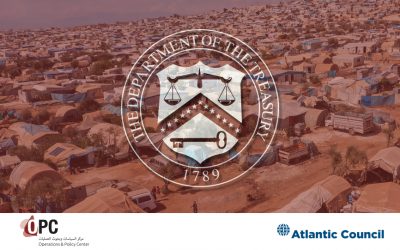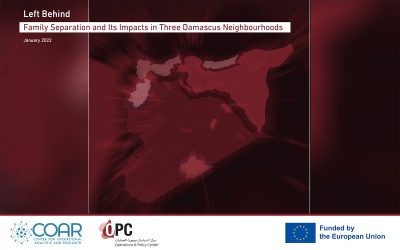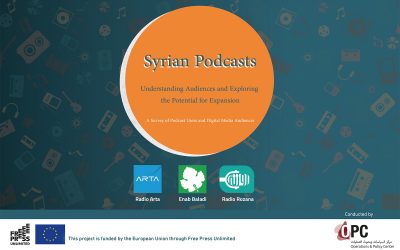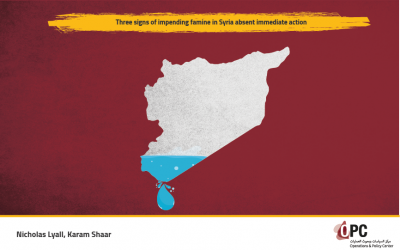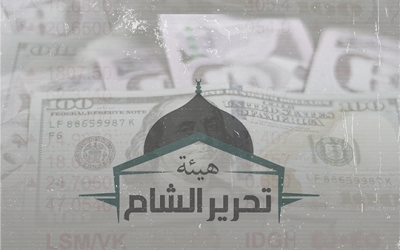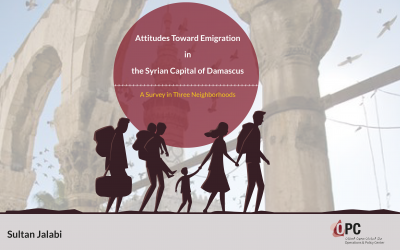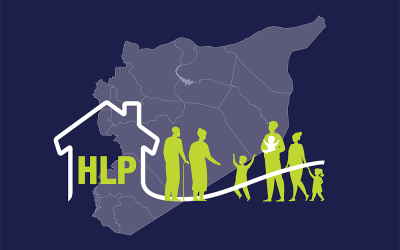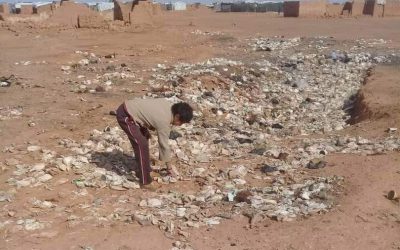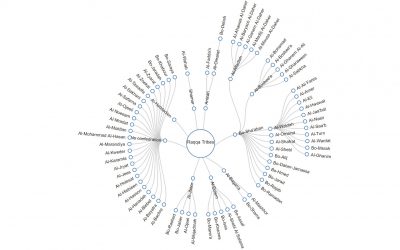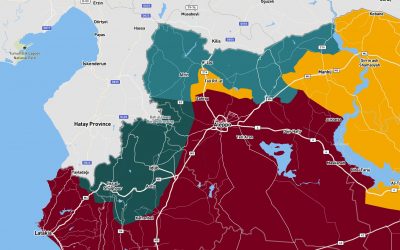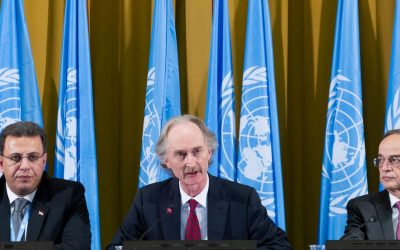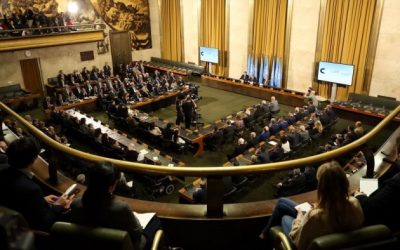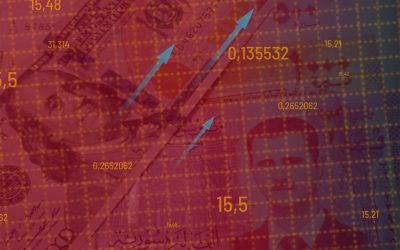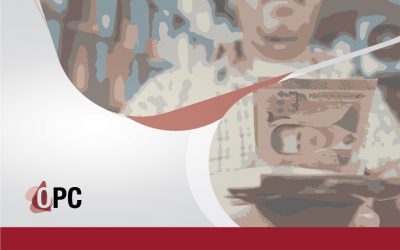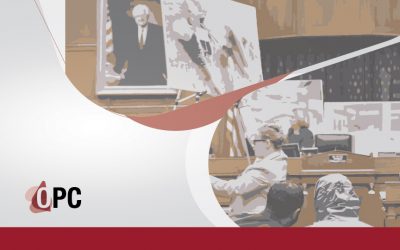Visualizing Syria’s Merchandise Trade 2010-2020
Every year, the Syrian Government releases merchandise trade data broken down, destination or country of origin, value, quantity, and commodity type, making it a valuable resource for analysts. This research tool pulls the scattered data together for easier access.
Visualizing UN procurements from Syria (2015-2021)
United Nations agencies procure many commodities and services from Syria to support their aid operations in the country. In 2020, for example, $245 million was spent on procurement, which constitutes nearly 10% of the UN’s overall spending in Syria. In this research tool, we illustrate the data in an interactive dashboard, enabling those interested to make better sense of it.
The Impacts of the Contemporary Drought in Syria and Its Implications for the Conflict
Despite a significant increase in rainfall across Syria this year, an improvement in the health of crop land is nowhere to be seen, and a tipping point might have been reached. In this study, Karam Shaar and Nicholas Lyall detail the impacts of this looming crisis and its potential implications on the nature of the conflict.
Syrian Youth and the Public Sphere After a Decade of War
In this study with Space of Hope, we explore the relationship between Syrian youth and the public sphere. Data collected from 1,000 respondents living across Syria’s control areas and Syrian communities in Turkey indicates that more than half are still somewhat interested in public affairs. But several factors currently limit their ability to match that interest with participation.
Data Shows Nowhere in Syria is Safe for Return
Despite the slowdown in military operations in Syria, other acts of violence and human rights violations remain the norm, making the whole-of-Syria unsafe for return. Published in collaboration with the Middle East Institute, this summary recaps on a recently published research project aimed at understanding the scale and types of violations experienced by Syrian returnees.
Is Syria Safe for Return? Returnees’ Perspective
Using expert interviews and a sample of 700 respondents from all control areas within Syria, this joint study with VDSF evaluates the safety, security and economic conditions in Syria to establish whether it is suitable for refugees and internally displaced persons to return home. The evidence strongly suggests that Syria is not yet safe for return.
Taming Syria’s Rogue Man
In a policy article published with the Carnegie Middle East Center, Dr. Karam Shaar stresses that the more-for-more approach with al-Assad can’t resolve the conflict, but it can kickstart the deadlocked political process.
The politics of early recovery aid in Syria. Is it actually reconstruction aid?
Published in collaboration with the Atlantic Council, this policy brief by Samy Akil and Karam Shaar provides answers to what is “early recovery” aid and how is it different from reconstruction, and who will benefit from the recent easing of regulatory restrictions by the US Government on early recovery in Syria.
Zombie Diplomacy and the Fate of Syria’s Constitutional Committee
In this op-ed, Prof. Steven Heydemann and Dr. Karam Shaar argue that the Geneva process for ending the Syrian conflict has become little more than zombie diplomacy, and call for abandoning Syria’s constitutional committee.
Left Behind: Family Separation and Its Impacts in Three Damascus Neighbourhoods
In this study with COAR, we investigate the impacts of family separation due to the conflict on those left behind. The data we collected from three neighborhoods in Damascus indicate that two-thirds of Syrians have relatives abroad, and nearly one-fifth have relatives displaced to non-Government areas. We examine the social, economic, and mental health impacts of this separation.
Visualizing Syria’s 2020, 2021, and 2022 Budgets
OPC has obtained a line-by-line breakdown of the 2020, 2021, 2022 budgets. To make a more digestible and useful research tool, OPC has visualized the data in an interactive dashboard.
Syrian Podcasts: Understanding Audiences and Exploring the Potential for Expansion
In this study we sought to understand the creation and distribution of podcasts in Syria. Its scope includes not only the characteristics of current producers and content, but also the demographics, habits, and preferences of the audience. Such a broad scope helps provide both current and future podcast producers with the necessary feedback to develop production and marketing strategies.
Three signs of impending famine in Syria absent immediate action
Syria is headed toward a famine due to three factors: The severity of the ongoing drought, which is compounded by the water management policies of neighboring Turkey; the unprecedented level of food insecurity, compounded by the rise in global food prices; and the decline in donor humanitarian funding. We propose three policy responses to pre-empt the looming crisis.
Living in Damascus After a Decade of War: Employment, Income, and Consumption
Syria’s regime-controlled areas witnessed several economic crises in late 2019 and 2020, leading to an exceptional deterioration in living standards. Operations and Policy Center (OPC) surveyed 600 respondents in three Damascus neighborhoods to assess Damascenes’ main economic activities: work, consumption, and spending.
The Economics of Hayat Tahrir al-Sham
This study outlines how Hayat Tahrir al-Sham is taking over Idlib’s economy since its transformation from the Syrian branch of al-Qaeda to the de facto authority in the area. While the takeover is incomplete, the extent to which it will continue is primarily determined by Turkey’s tolerance of the group.
Attitudes Toward Emigration in the Syrian Capital of Damascus: A Survey in Three Neighborhoods
Using a sample of 600 respondents, this study attempts to identify attitudes among residents of the Syrian capital, Damascus, toward emigration and the context surrounding it, conducted at a time when the areas under the Syrian regime’s control are witnessing an exceptional deterioration in living standards. (Read in Arabic)
Reality of Housing, Land, and Property Rights in Syria
This comprehensive report, published by the Day After in collaboration with OPC, gives a panoramic view of housing, land, and property (HLP) rights in Syria. It studies informal housing, access to documentation, institutions for real estate development and how they operate, and the HLP measures taken in areas outside the regime’s control. (Read in English, Read in Arabic)
The Red Dragon in the Land of Jasmine: An Overview of China’s Role in the Syrian Conflict
As China’s engagement in the Middle East continues to rise, its role in the Syrian conflict remains largely unaddressed. This study provides an overview of China’s interests and objectives in the conflict while simultaneously assessing its potential involvement in any reconstruction process.
Stuck in No-Man’s Land: A Snapshot of the State of al-Rukban in its Seventh Year
Seven years on, the situation in al-Rukban displacement camp is growing increasingly desperate. This study provides an overview of the humanitarian and medical conditions in al-Rukban, as well as the public services available.
The Kin Who Count: Mapping Raqqa’s Tribal Topology
Previous analyses have often misunderstood the intricate tribal structures in Syria, drawing false links between tribalism and terrorism. This interactive research tool, co-published by the Middles East Institute and the Operations and Policy Center, aims to shed light on the tribal structure in ar-Raqqah governorate, making it accessible to anyone interested in understanding the current state of affairs there.
North-West Syria: Potential Scenarios
Despite the Russian and Turkish de-escalation and ceasefire agreements, the Assad regime continues to attack NW Syria, especially areas to the south of the M4. Here we map out potential military conflict scenarios for the near-term future of NW Syria, in light of the volatile Turkish-Russian dynamics.
Syrians and the Constitution Survey
Explore our data-driven interactive tool to understand how Syrians feel about the Syrian Constitutional Committee, relying on a 2,966-people survey conducted in the summer of 2020.
Syrian Opinion Split on Decentralizing Power in New Constitution
As the Constitutional Committee met in Geneva, OPC analyzed the opinions of Syrians on what they want a new system of governance to look like. Their answers, unsurprisingly, were varied.
2021 Budget Reveals the Depth of Syria’s Economic Woes
The 2021 budget is the smallest to date. However, a deeper analysis of the 2021 budget reveals core structural problems with Damascus’s finances.
Public Attitudes Toward the Depreciation of the Syrian Pound in Northeast Syria
In mid-2020, OPC was commissioned by the French Ministry of Foreign Affairs to investigate the drivers and implications of the sharp depreciation in the Syrian pound. This report reviews the functions of money (both in general and in the Syrian context), presents a timeline of the value of the pound in relation to relevant events from 2011 to 2020, and showcases public attitudes on the topic using a survey.
Northeast Syria’s Kurds: The Dynamics of Politics and Power
In mid-2020, OPC was commissioned by the French Ministry of Foreign Affairs to investigate the Dynamics of Politics and Power Among Northeast Syria’s Kurds and people’s attitudes regarding the possibility of a Kurdish-Kurdish dialogue. This report relied on interviews with influential and informed personalities from the region and a sample survey of 600 of the region’s residents.
Public Attitudes Toward the Caesar Act in Northeast Syria
In mid-2020, OPC was commissioned by the French Ministry of Foreign Affairs to investigate the attitudes of people in northeast Syria regarding the US Caesar Act sanctions. This report showcases general attitudes regarding both the overall effectiveness and specific local effects of the Caesar Act, extrapolated from a 600-participant sample, surveyed by OPC’s field researchers during 18-27 August 2020.
